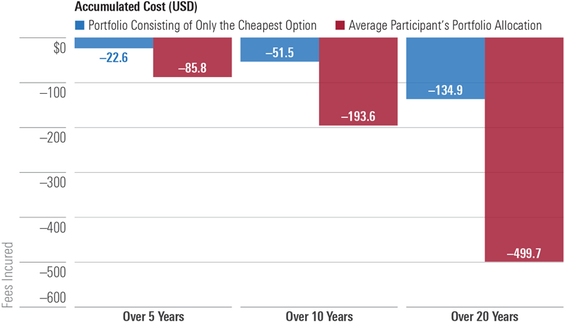Although there are many reasons to shop at Costco, a behaviorally driven incentive may not be immediately obvious. Costco stocks only one or two products per category, while its competitors can boast near 10. That’s because instead of overwhelming customers with a wide variety of goods, Costco simplifies its inventory by only offering a limited amount of products that it finds to be of good quality. This reduction in choice, a mere 20% of what others hold, makes it easier for people to quickly and efficiently buy what they need and move on with their lives. But the same can’t be said in many other areas of a person’s life. In finance, for example, the industry often acts as if additional options are better for investors—but our research indicates that this might not be the case.
Why investing in index funds should be like shopping at Costco
We conducted an experiment to understand the impact of offering individuals multiple S&P 500 exchange-traded index funds that are essentially indistinguishable in terms of performance and holdings but charge vastly different fees. We found that many participants still invested in the more-expensive funds to some extent, even when nearly identical low-cost index funds were available. But when participants could choose only one ETF to allocate all their money to, significantly more of them chose the cheapest option. Our research points to naive diversification as the culprit of this investing mistake.
Naive diversification can be costly
Compared with those who only invested in the cheapest option, participants who naively diversified incurred almost four times more in costs.

Source: Morningstar Direct and authors’ analysis
This isn’t a problem that is likely to be solved through financial education; instead we must look at how investment options are presented, and yes, learn from how Costco simplifies and curates.
Why advisors should curate choices like Costco
It is important for advisors to act as behavioral coaches—someone who helps investors cultivate good financial habits, stick to their investment plans, and manage their emotional responses to market corrections. Part of being a behavioral coach is creating an environment that supports and guides clients toward more-optimal decisions. Our findings suggest that the typical investing environment that provides clients with many options may prompt suboptimal decisions. Therefore, as behavioral coaches, advisors can mitigate this tendency by creating an environment that mimics that of Costco, curating the options to help clients make an efficient choice.
A behavioral design to investing in index funds
Numerous investment options may allow for customized client solutions, but they can also make the process far too complex for some investors. Here are a few ways advisors can shape the decision-making environment to help investors stay on track:
- Curate: Some investments just don’t belong in the mix of options—either for price or quality related reasons. Although it might seem fair to present clients with every option available, leaving these out may actually be better for them.
- Simplify: Advisors can work with their client’s tendency to naively diversify by strategically structuring their portfolio options. For example, organizing investing options into their prospective fund categories so clients who just choose one of each are still left with a diversified portfolio.
- Focus on value: As we know from research, fees are an important indicator of success when it comes to investing. Advisors should always focus on keeping costs relatively low for the quality and quantity of goods provided.
Although research has long shown the significant decline in average fees charged by active and passive funds, the reason behind this shift is not entirely clear. Our research indicates that although index fund fees are going down, individual investors are still prone to investing mistakes that cause them to overpay. Given these findings, the financial industry can help investors by thinking a little bit more like Costco and building a better marketplace that helps real people make better choices.
Request a demo to learn how advisors can use Morningstar Direct to create simplified custom reports to help clients combat naive diversification.


